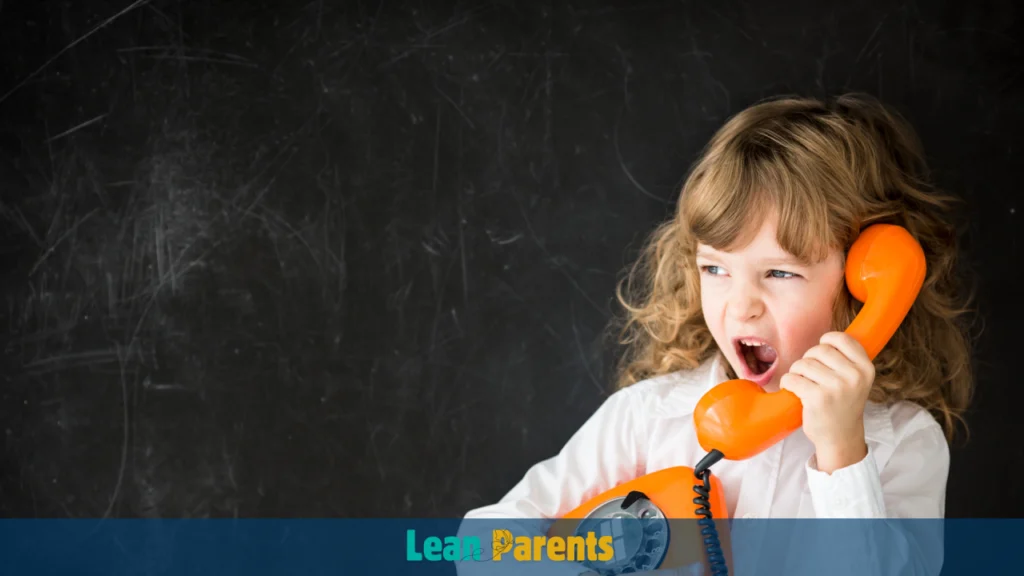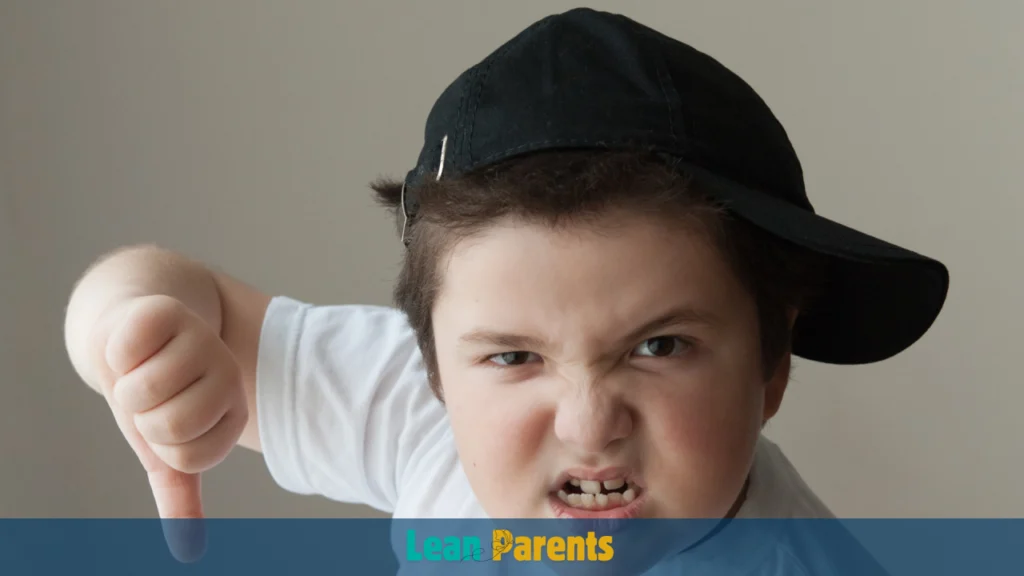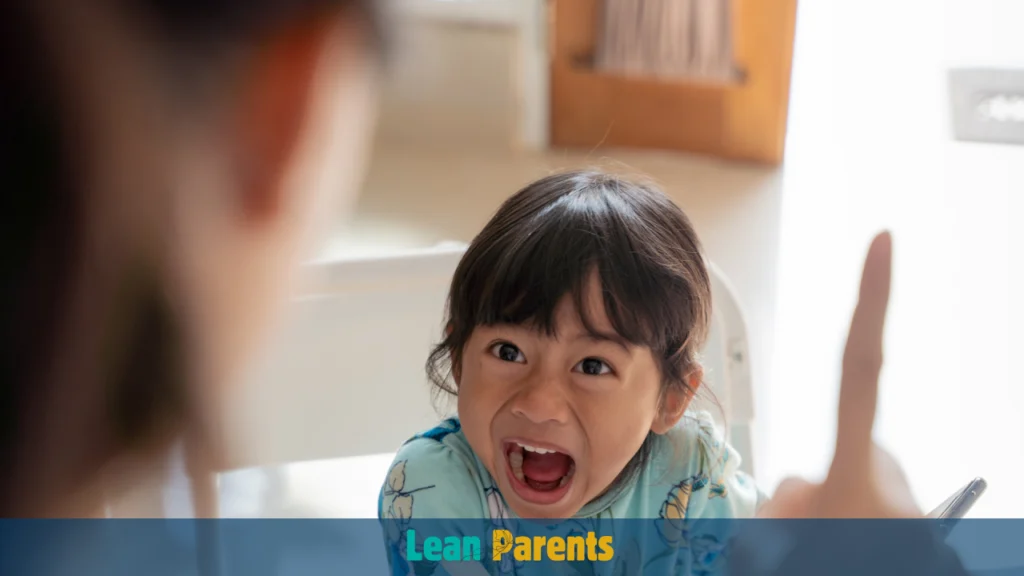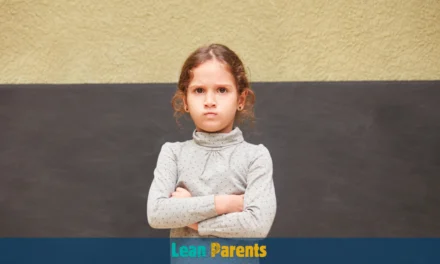Curb Aggressive Behavior, as it can cause tension and damage relationships. It can also stop personal growth. But, with the right strategies, we can manage and curb aggressive behavior to create peace. This guide will show you six ways to handle aggressive behavior, based on expert advice and research.
Key Takeaways
- Understand the common triggers and causes of aggressive behavior in children and adults
- Develop empathy skills and create safe communication channels to address the root of aggression
- Establish clear boundaries and expectations to promote self-control and emotional regulation
- Leverage the power of positive reinforcement and time-outs to shape desired behaviors
- Encourage physical exercise as a healthy outlet for aggressive impulses
By using these strategies, you can reduce aggressive behavior. This will make your environment more harmonious and supportive. Remember, consistent guidance and a stable home are key for positive behavior in kids1. Time-outs should be rare, used only when all else fails1. Focus on using other methods to manage aggression before it gets worse1.
By tackling the root cause and offering support, you can help people control their emotions. This way, they can handle tough situations without aggression.
Understanding Aggressive Behavior in Children and Adults

Aggressive behavior can show up in many ways, like physical fights or verbal attacks. It’s key to know the signs to tackle it well2. Kids aged 2 to 6 often fight over toys, showing most aggression2. Toddlers and preschoolers tend to be more physical because they act on impulse and don’t talk much2.
Signs of Aggressive Behavior
Aggressive acts can include hitting, grabbing, yelling, and more2. Sometimes, kids might hurt others by accident or on purpose for fun2. Other times, they might act out to hurt someone on purpose, like to get power2.
Common Triggers and Causes
Studies reveal many reasons why kids might become violent3. Things like past violence, seeing violence at home, and having guns around can increase risk3. Also, drugs, family money issues, and violence in media can play a part4.
Impact on Relationships and Development
Aggressive behavior can really hurt relationships and how a child grows2. It can cause injuries, damage things, and affect a child’s social and emotional growth2. Teaching kids to solve problems peacefully is important to avoid these problems2.
Knowing about aggressive behavior helps parents and caregivers stop it3. Early action and prevention, like reducing violence exposure and supporting parents, can help4.
| Aggression Type | Description |
|---|---|
| Accidental Aggression | When a child unintentionally hurts another, such as stepping on someone’s foot while playing. |
| Expressive Aggression | Committing aggressive acts for personal pleasure without intending to harm. |
| Hostile Aggression | Deliberate behavior aimed at physically or psychologically hurting someone, often related to seeking power or addressing perceived sabotage. |
| Instrumental Aggression | Conflicts that arise over objects, territory, or rights, resulting in someone getting hurt in the process. |
The Science Behind Anger and Aggression

Anger and aggression are complex emotions and behaviors. They have roots in neuroscience and psychology. The neuroscience of anger shows how the brain reacts to emotional triggers5. In healthy people, the brain’s orbital frontal cortex helps control anger before it acts5.
But, people with depression or anger issues have different brain activity. Their amygdala is more active, and their orbital frontal cortex is less active. This can lead to angry outbursts5.
Psychological factors also shape aggressive behavior6. Aggressive behavior is common in certain personality disorders. For example, 47% of violent male offenders and 21% of female violent offenders have antisocial personality disorder6.
Childhood experiences and family environment also play a role in aggression6.
Researchers have found many emotional triggers for aggressive outbursts7. Anger can be caused by people, events, personal problems, or traumatic memories7. People who can’t manage their anger well may get frustrated easily and act out destructively7.
| Key Findings | Source |
|---|---|
| In healthy individuals, the orbital frontal cortex engages to suppress anger before acting on it. Depressed individuals with anger issues show increased amygdala activity and decreased orbital frontal cortex activation, leading to aggressive outbursts. | 5 |
| Aggressive behaviors are common in personality disorders, with 47% of violent male offenders and 21% of female violent offenders having antisocial personality disorder. Genetic and environmental factors play a significant role in the development of aggressive tendencies. | 6 |
| Anger can be caused by external and internal events, and individuals who struggle to manage their anger may have a low tolerance for frustration. | 7 |
Understanding anger and aggression is key to finding solutions. By knowing the factors behind aggressive behavior, we can work towards better ways to manage and prevent harmful outbursts.
How to Curb Aggressive Behavior Through Active Listening

Effective communication and empathetic listening are key to tackling aggressive behavior. By honing active listening skills and setting up safe communication spaces, parents and caregivers can grasp the emotions driving aggressive outbursts. They can then work towards finding positive solutions8.
Developing Empathy Skills
Empathy is crucial for grasping the viewpoint of someone showing aggressive behavior. This means listening actively, recognizing their emotions, and exploring the reasons behind their actions9. With compassion and a true wish to assist, parents and caregivers can ease tense moments. They can also steer the person towards better ways to cope8.
Creating Safe Communication Channels
It’s vital to create open and supportive communication spaces to tackle aggressive behavior. This means setting clear rules, using the “I Feel Formula” to share concerns, and encouraging open talk without fear of judgment or backlash9. By building a space of trust and understanding, parents and caregivers can work together to find solutions and prevent future outbursts10.
| Effective Communication Strategies | Benefits |
|---|---|
| Active Listening | Builds trust, demonstrates understanding, and helps identify underlying emotions |
| Empathetic Responses | Validates the individual’s feelings and encourages open dialogue |
| Clear Boundary Setting | Establishes expectations and maintains a safe environment for all parties |
| Collaborative Problem-Solving | Engages the individual in finding constructive solutions to address the issue |
By using these effective communication methods, parents and caregivers can lay a solid foundation of trust, understanding, and teamwork. This helps to reduce aggressive behavior and promotes more positive interactions910.
Setting Clear Boundaries and Expectations
Effective behavior management starts with clear rules and expectations in the family. Setting consistent rules helps kids know what’s okay and makes them feel safe11. But, it takes patience and effort, as 80% of people who mistreat others don’t change when asked11.
It’s key to talk about new rules with your kids12. This way, they understand and feel part of the rules. Also, 50% of people say explaining boundaries makes them more accepted11.
- Make clear, age-right rules and what happens if they’re broken.
- Always stick to the rules so everyone knows what to do.
- Use positive ways to encourage good behavior instead of harsh punishments.
It’s vital to know the difference between discipline and punishment. Discipline teaches and helps grow, while punishment is often just a reaction12. By using positive methods, you help kids learn to control themselves and understand right behavior12.
| Discipline | Punishment |
|---|---|
| Teaches and guides | Focuses on consequences |
| Promotes self-regulation | Relies on external control |
| Fosters responsibility | Promotes resentment |
Setting clear rules is a continuous effort. It needs patience, consistency, and a readiness to change as your family grows. By creating a caring space with clear rules, you help your kids manage their actions and succeed in their relationships12.
The Role of Self-Control in Managing Aggression
Learning to control oneself is key to handling aggressive behavior. Studies reveal that babies may seem aggressive, like grabbing hair, but it’s not intentional. This is because they lack self-control at a young age13. Around 18 months, toddlers struggle with self-control and might hit, kick, or bite to express feelings13.
Teaching Emotional Regulation
Teaching kids to manage their emotions is vital. Setting clear limits and redirecting their attention helps them use less aggressive ways to communicate13. When parents stay calm during outbursts, kids learn to calm down and handle their feelings better13.
Offering better ways to express anger, using distractions, and giving them time to cool off are good strategies. These methods help reduce aggressive behavior in children13.
Developing Coping Mechanisms
Encouraging kids to express emotions in healthy ways, like jumping or cuddling, helps them control their actions13. Yet, research shows that self-control training may not always lower violent behavior14. Aggression is linked to brain activity, and most violent offenders develop self-control in their teens14.
By teaching emotional control and healthy ways to cope, parents can help kids manage their aggression better.
Creating a Supportive Environment for Behavioral Change
Creating a nurturing and supportive environment is key for positive behavioral changes in kids and adults. When people feel safe and supported, they’re more open to new behaviors and ways to manage anger15. The setting, toys, and mood of a place greatly affect behavior15.
At home, quiet, safe areas can help reduce bad behavior. Keeping dangerous items away encourages good behavior15.
Good communication is also vital for a supportive setting15. Giving clear instructions and making sure people can follow them helps guide behavior15. Knowing how someone reacts to requests versus instructions can help tailor communication, as requests tend to encourage cooperation15.
Parent and peer support is also crucial16. Positive Behavioral Interventions and Supports (PBIS) create a supportive school climate. It promotes good behavior and tackles challenges with proven methods16. High-Leverage Practices (HLPs) in special education also help, by setting up a consistent, respectful learning space16.
By focusing on positive reinforcement, empathy, and clear rules, we can help people change their behavior more easily15. This approach, covering both physical and social environments, is a strong way to reduce aggression and promote better behaviors15.
Physical Exercise as an Aggression Outlet
Regular physical activity can help manage aggressive behavior. Studies show college students who exercise more are less aggressive17. Exercise not only reduces stress but also offers a healthy way to release anger and frustration.
Benefits of Regular Physical Activity
Exercise helps reduce aggression and psychological issues in university students17. More intense workouts can make it even more effective17. It helps people manage anger and aggression in a positive way.
Recommended Activities for Different Age Groups
- Children and teens can benefit from team sports like soccer, basketball, or volleyball. These activities promote teamwork, communication, and healthy competition.
- Adults might enjoy solo activities like running, cycling, or strength training. These provide a personal space to release stress and frustration.
- Martial arts, such as karate or judo, teach discipline and self-control. They help channel aggressive impulses in a healthy way.
For all ages, regular physical activity is key for stress reduction and anger management18. Finding enjoyable, age-appropriate activities helps develop better coping strategies and lowers aggressive behavior risk.
| Age Group | Recommended Physical Activities | Benefits |
|---|---|---|
| Children and Adolescents | Team sports (soccer, basketball, volleyball) | Foster cooperation, communication, and constructive competition |
| Adults | Individual exercises (running, cycling, strength training) | Provide a solitary outlet for stress and frustration |
| All Ages | Martial arts (karate, judo) | Teach discipline, self-control, and healthy ways to channel aggressive impulses |
By using physical outlets, people can develop better coping strategies and lower aggressive behavior risk. Regular physical activity is a proven method for stress reduction and anger management1718.
Using Positive Reinforcement Techniques
Positive reinforcement is a great way to stop aggressive behavior in kids and adults. Positive reinforcement techniques reward good behavior instead of punishing bad ones. This method works well for kids with autism19.
The A-B-C Model (Antecedent-Behavior-Consequence) is key to positive reinforcement. It helps shape good behaviors with positive results19. ABA therapists make plans that fit each person’s needs and interests19.
There are many ways to use positive reinforcement. You can give food rewards, let them do fun activities, or give them praise. The goal is to make them want to act in a better way19. This method helps kids with autism and even dogs by teaching them better ways to behave192021.,,
| Positive Reinforcement Techniques | Benefits |
|---|---|
| Food rewards | Motivate desired behaviors, especially in young children or those with special needs |
| Favorite activities | Encourage engagement and reinforce positive associations |
| Social recognition | Provide verbal praise and acknowledgment of good behavior |
| Token systems | Allow individuals to earn rewards for meeting specific goals or behavior targets |
B.F. Skinner showed how rewards can shape good behavior19. By using these methods, we can help people change their ways for the better192021.,,
The Power of Time-Outs and Cool-Down Periods
Time-outs and cool-down periods are key tools for managing aggressive behavior. They help calm down conflicts and teach self-control. This makes it easier to solve problems peacefully22.
Implementing Effective Time-Out Strategies
Time-outs have been used since the 1950s to manage behavior. They were first proven effective by Arthur Staats22. But, some people have questioned their use in recent years22.
Studies on the brain show that time-outs can work well when used right22. They are best for kids aged two to eight22. It’s important to keep them short and consistent. Also, let kids make things right after the time-out22.
Dr. Anderson says positive reinforcement is key. Being consistent with time-outs and other strategies is also crucial22.
When to Use Cool-Down Periods
Cool-down periods are also useful for managing aggressive behavior. Research shows they work well in positive, consistent environments23. Science journalist Melinda Wenner Moyer found no harm from time-outs23.
Experts agree that time-outs are good when done positively23. Psychologist Cara Goodwin says they don’t harm parent-child bonds23. Instead, use safe-space breaks for a loving approach23.
Understanding time-outs and cool-down periods helps manage aggressive behavior. It promotes self-control and healthy conflict resolution in both kids and adults.
Teaching Alternative Behaviors to Replace Aggression
Stopping aggressive behavior in kids and adults needs a proactive plan. It’s not just about punishing bad actions. We must teach better ways to act instead. This means learning conflict resolution skills, assertiveness training, and emotional intelligence.
Our main goal is to help people share their needs and feelings in a good way. Many parents and caregivers face challenges with aggressive behavior in24. Schools also have strict rules against aggression24. It’s vital to teach new behaviors to avoid harsh punishments like suspensions or expulsions24.
- Develop Assertiveness Skills: Teach people to stand up for themselves in a respectful way. They should express their opinions and solve conflicts without being aggressive.
- Foster Conflict Resolution Strategies: Give people skills to solve problems and communicate well. This helps find solutions that work for everyone.
- Enhance Emotional Intelligence: Help people understand and manage their feelings. This way, they can handle challenges with calmness and empathy, not aggression.
By learning new skills, people can deal with social situations better. They can build stronger relationships and avoid the bad outcomes of aggressive behavior24. This is especially important for those on the autism spectrum, who face challenges with feelings, communication, and managing their environment24.
We need to find out what triggers aggression, like frustration or fear. Then, teach ways to express needs in a good way24. Using positive feedback, showing good behavior, and giving physical activities can also help change aggressive behavior24.
The aim is to give people the tools to handle their feelings and solve problems without being aggressive24. By teaching new behaviors, we can make a more peaceful place for everyone24.
“Aggressive behaviors often stem from an inability to express oneself effectively. By teaching alternative skills, we can unlock new possibilities for growth and connection.”
The Impact of Parental Response on Aggressive Behavior
As parents, our actions and reactions greatly affect our children’s behavior. By modeling good behavior and using consistent discipline, we can help reduce aggression in our kids25.
Modeling Appropriate Behavior
Children watch us closely and often copy what we do. When we show them how to handle emotions and solve problems, they learn from us25. Keeping calm and setting a good example helps our kids deal with tough situations better.
Consistent Discipline Approaches
Setting clear rules and sticking to consequences is key to good discipline26. Using age-appropriate punishments, like time-outs, helps kids see the effects of their actions. This, along with praising good behavior, can make our homes more peaceful.
| Parental Influence | Impact on Child Behavior |
|---|---|
| Modeling Appropriate Behavior | Children are more likely to internalize and replicate positive strategies for emotional regulation and conflict resolution. |
| Consistent Discipline Approaches | Clear boundaries, consequences, and positive reinforcement can effectively reduce aggressive tendencies and promote better behavior. |
By focusing on parental influence, behavioral modeling, and effective discipline, we can help our kids grow up with self-control and empathy. This approach can greatly reduce aggression and improve relationships.
“Parenting is not about perfection. It’s about connection.” – L.R. Knost
Professional Help and Intervention Options
When aggressive behavior gets too much, getting professional help can really help. Behavioral therapy27 and counseling teach people to handle their feelings better. They learn to control themselves and change bad habits to good ones. Intervention programs28 for kids and adults tackle the reasons behind aggression, like trouble talking or mental health issues27.
A mental health expert, like a psychologist, can figure out why someone is aggressive. They make a plan to help. This might include learning to manage anger or other proven methods29. For kids, a special assessment helps find out why they act out. It helps make a plan to help them27.
For really bad aggression, special programs28 are needed. These are run by experts in behavior or mental health. They offer deep, proven help to teach new ways to deal with feelings. Getting help and sticking with treatment is key to changing behavior for the better.
FAQ
What are the signs of aggressive behavior in children and adults?
What are the common triggers and causes of aggressive behavior?
How does aggressive behavior affect relationships and child development?
What techniques can be used to defuse aggressive situations through active listening and empathy?
How can clear rules and expectations for behavior be established and enforced consistently?
What is the role of self-control in managing aggressive behavior, and how can emotional regulation be taught?
How can a supportive environment be created to encourage positive behavior and reduce aggressive tendencies?
How can physical activity serve as a healthy outlet for managing aggression?
What are the benefits of using positive reinforcement strategies to encourage good behavior?
How can time-outs and cool-down periods be used effectively to manage aggressive behavior?
What techniques can be used to teach alternative behaviors to replace aggressive responses?
How do parental responses and modeling of behavior impact children’s aggressive tendencies?
When and how should professional help be sought for managing severe or persistent aggressive behavior?
Source Links
- 10 Tips to Prevent Aggressive Behavior in Young Children
- Helping Children Resolve Conflict:Aggressive Behavior of Children
- Violent Behavior in Children and Adolescents
- Understanding Violent Behavior In Children and Adolescents
- Anger Management
- Neurobiology of Aggression and Violence
- Control anger before it controls you
- Strategies for Addressing Aggressive Behavioral Outbursts in Adolescents and Adults with Fragile X Syndrome | NFXF
- How to Handle Aggressive or Confrontational People
- Exactly How to Handle Aggressive Behaviors in the Moment
- This boundary advice is secretly destroying your relationships. — Hailey Magee
- How to Set Boundaries with Difficult People: Do’s and Don’ts
- Coping With Aggression and Teaching Self-Control
- Aggression Is A Result of Self-Control, Not Lack Thereof – Neuroscience News
- Changing the environment: positive behaviour strategy
- What strategies can educators implement to prevent or address challenging behaviors?
- Analyzing the effects of physical activity levels on aggressive behavior in college students using a chain-mediated model – Scientific Reports
- Effects of physical education, extracurricular sports activities, and leisure satisfaction on adolescent aggressive behavior: A latent growth modeling approach
- Positive Reinforcement In ABA Therapy (2023)
- Positive Reinforcement and Aggressive Dog Training | Michael’s Dogs Behavior Group
- Correcting Unwanted Behavior with Positive Reinforcement | Michael’s Dogs Behavior Group
- Are Time Outs Harmful to Children? – Child Mind Institute
- Safe Space Breaks: When Giving Your Child (And Yourself!) A Break Can Be Helpful, Not Harmful — Child Development and Parent Consultation
- 10 Effective Replacement Behaviors for Hitting and Aggression
- Harsh Parenting and Children’s Aggressive Behavior: A Moderated Mediation Model
- Frontiers | Parental Education and Aggressive Behavior in Children: A Moderated-Mediation Model for Inhibitory Control and Gender
- Tips for Managing Aggressive Behaviors — Behavior Frontiers
- Aggressive Behavior: Signs, Causes, and Treatment
- Tips and Strategies for De-Escalating Aggressive, Hostile, or Violent Patients





